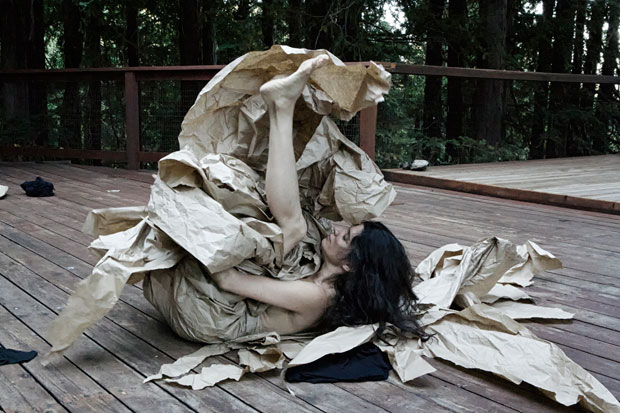
Ally is on at The Fabric Workshop and Museum, 1214 Arch Street, Philadelphia, Pennsylvania 19107, USA from 21st April 2016 to 31st July 2016. Full exhibition details
www.fabricworkshopandmuseum.org
en.wikipedia.org/wiki/Janine_Antoni
www.annahalprin.org
petron.io
“Lines through space!” called out choreographer Stephen Petronio to artist Janine Antoni and the audience members who had been recruited to help make an elaborate web of rope across the gallery. “Weave high. Now weave low. Feel the fish on the end of your rope. Stop!” Petronio had spotted that a journalist at the preview had become entangled at the centre of the web with the rope around his neck. Antoni gently freed the captive and the dance continued.
Rope Dance is one of four art works that combine dance performances, installation, sculpture and video in the exhibition Ally, which opened at Philadelphia’s Fabric Workshop and Museum on April 21st. Four floors in the museum are each devoted to a different work: Rope Dance, Paper Dance, The Courtesan and the Crone and Swallow.
The show is a bold attempt to take the fusion of the dance and art disciplines to a new level and is the result of a three-way collaboration between artist and sculptor, Janine Antoni, who conceived the project, influential movement artist and choreographer Anna Halprin and choreographer Stephen Petronio.
Antoni, who has participated in the Venice Biennale, Whitney Biennial and the Johannesburg Biennale and featured in exhibitions at New York’s Whitney Museum of American Art and the Museum of Modern Art, among other museums, is known for emphasising the process in her work and for creating sculpture and other works through intimate acts of the body.
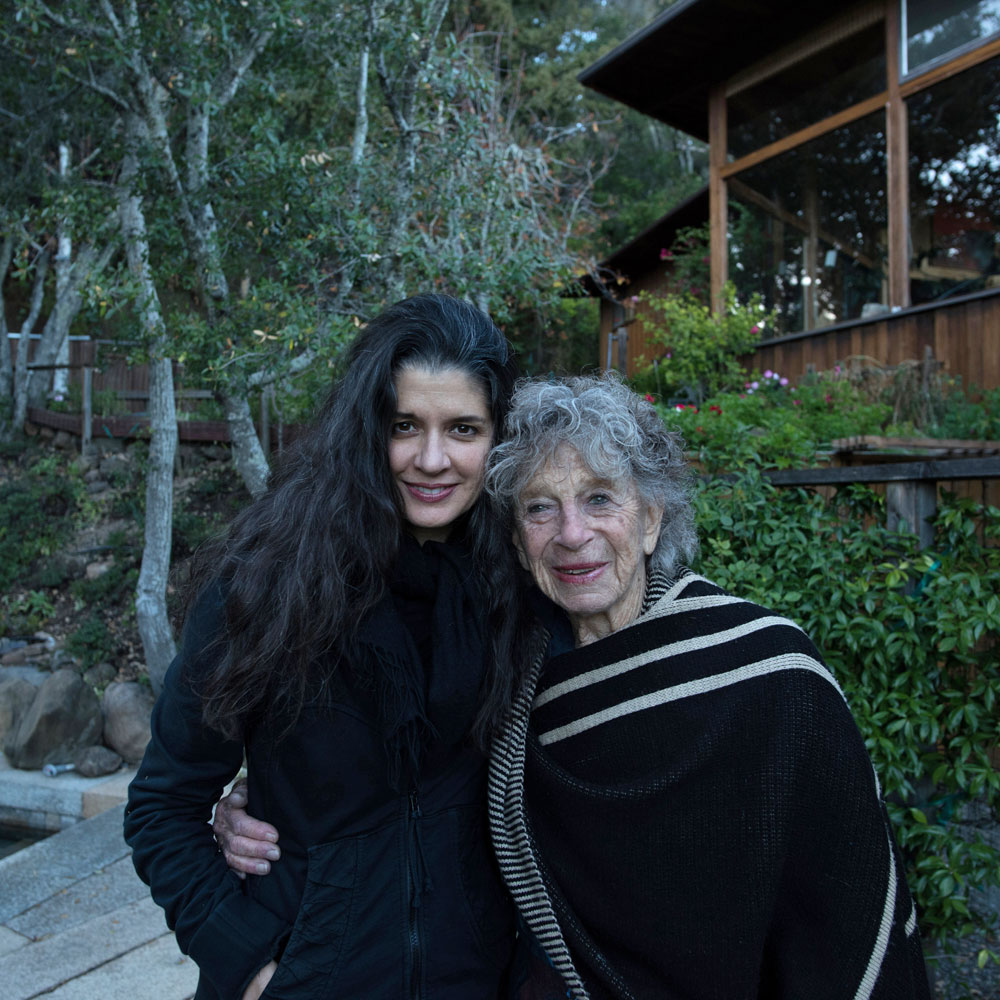
She first met Halprin in 2011 after she watched the 2009 documentary Breath Made Visible about the 95-year-old, whose influence on American dance has been felt for half a century and who founded the Tamalpa Dance Institute with her daughter in 1978 to focus on movement-based expressive art healing. A central tenet of her teaching is that anybody can be a dancer.
“Breath Made Visible blew my mind,” said Antoni at Ally’s preview. “The minute I saw that, I wanted to do a dance workshop with her.” The result was that Halprin created Paper Dance with Antoni, derived from a scene in Halprin’s 1965 theatre work Parades and Changes, where the dancers performed naked with long rolls of brown paper.
Soon after that, Antoni worked with Stephen Petronio on his dance company’s 2013 production of Like Lazarus Did at the Joyce Theater in New York, one of their many collaborations both in galleries and on the proscenium stage. “I didn’t know Anna’s workshops were still happening until Janine told me,” said Petronio. “Of course, I was jealous. I wanted to dance with her too.” The three-way collaboration was born.
Antoni created a living set for Petronio’s production of Like Lazarus Did, a work that addresses slavery’s legacy. While the performance was taking place, Antoni was suspended high above the audience inside one of her own sculptures, meditating in a pose that reflected the choreography on stage.
In Ally, though, Antonio and Petronio are not just bringing very different disciplines together, but leaping into each other’s artistic practices. “So much of the work we do together is about our connection,” said Petronio. “Ally was a way for us to be even closer to one another.” In Rope Dance, for example, Antoni and Petronio are both dancers; in Swallow, they are both part of an art installation.

Petronio, who as a choreographer is known for his dynamic, attacking style, is forced to slow down for Rope Dance, a community dance scored by Halprin. In an intricate web of connected bodies, every move is tentative and based on trust in one another, and in the audience, who participate. “Unlike Janine, my body is my material,” said Petronio. “The rope for me was less natural and possibly challenging for Anna, because I have a very highly evolved movement that I understand in my body and at first the rope was in my way.”
In Swallow, all the movement is condensed into one act in which Antoni and Petronio simultaneously swallow and then regurgitate the opposite ends of a 10-foot-long strip of cloth, which is translated into a permanent sculpture.
Antoni is the sole dancer in Paper Dance, gradually shedding her clothes and shaping and sculpting a long roll of brown paper with her body, echoing the process behind many of her previous sculptures, as she moves from one end of the gallery to the other.
“When [Halprin and I] started working together, she right away went to the paper,” Antoni said. “She knew I was a sculptor and she knew that if she gave me a material to interact with, that I wouldn’t worry about how I was moving. It was very exciting.” In fact, Antoni is both a graceful and dramatic performer, injecting the improvised performance alternately with tension and humour.
Ally not only gives the artists the freedom to work outside their conventional spheres, but offers a refreshing new look at how dance is experienced in museums, which typically present live dance separately from the curated art objects, rather than making it the focus of an exhibition itself.
“Dance burns and disappears, whereas traditionally, materials in a museum have longevity,” said curator and performance scholar Adrian Heathfield, who is editing a book on Ally that will document the entire collaboration. “What we are doing here is transporting ephemeral things into an institution oriented towards objects.”
So while Ally includes three live dance performances, Rope Dance, Paper Dance and The Courtesan and the Crone, repeated for the duration of the three-month-long exhibition, the fleeting nature of those performances is captured differently within each work, even when the dances have finished.

The Courtesan and the Crone is a 10-minute-long, theatrical, gender-bending performance by Petronio; a solo dance of seduction, disrobing and unmasking that Halprin initially conceived for herself when she was 79. Here, the only remnant of the performance in the gallery once it has finished is Petronio’s discarded gold robe, which is hoisted aloft as the curtain falls and the performance ends.
However, you can imagine the experience of watching Rope Dance without even seeing it – or becoming a participant. A floor to ceiling video installation featuring a close up of Halprin’s face plays in the gallery when the performance is not taking place, capturing all her reactions as she watches Petronio and Antoni perform the dance at her Mountain Home Studio in California.
Visitors become deeply immersed in that moment. Sitting in the darkened gallery wearing headphones, they are privy to her tears, laughter and gasps of surprise, the sound of Petronio and Antoni’s footsteps and the background noises of dogs barking, birds singing and planes flying over Halprin’s garden.
In Paper Dance, Antoni is surrounded by crates containing her past works, including sculptures, such as her 1993 work in chocolate and soap, Lick and Lather, and photographic works, like Mom and Dad (1994). She unpacks one work during each hour-long performance, so that each dance adds to an ever-changing survey of her work in the gallery.
Each performance of Paper Dance in turn creates new paper remnants, which are added to a paper mountain at one end of the gallery, while the fragment of Parades and Changes continuously plays in the space when performances are not taking place.

In Swallow, museum visitors do not see the act of swallowing itself, but experience it through the recorded testimony of the 10 witnesses that did, including a photographer and an expert on swallowing disorders. They also see the remnants of the act. These include the cloth itself, encased in a gold reliquary, and the only photo taken of the event, also printed on cloth and slowly decomposing.
Each work emphasizes what has occurred and what is still to come, and compared to the experience of watching dance on the stage, walking into a gallery with just a few other people without knowing what will unfold in that room next was both intimate and intense.
That’s also an unfamiliar experience in a museum. “We are very confused in the art world and we want to fix things in time. We believe that when we turn our backs that art remains the same,” said Antoni.
By contrast, she said that dance can be a process and that it is interesting to enter a process that has already begun and will continue afterwards. “In dance, there are these fleeting moments and somehow certain things stick to you. Why do things stick to different people in different ways and what meanings do we make from the idea that something is also happening here that I’m not seeing?”

While Ally is certainly experimental, as Paper Dance’s homage to Parades and Changes demonstrates, it has strong ties to much earlier works that similarly dispensed with the rulebook and challenged modern dance convention.
When Parades and Changes was performed in New York in 1967, Halprin was nearly arrested for indecent exposure because of the nudity of the dancers on stage. “Parades and Changes is all about removing your clothes with honour and Anna is still performing nude in her nineties,” said Antoni. “If I can’t deal with my body, I had better get over it.”
Ally also has links to other groundbreaking postmodern dance works that brought choreographers and visual artists together to realise a shared vision. Petronio became the first male dancer in the Trisha Brown Dance Company in 1979, the year when Brown, who studied with Anna Halprin herself, had just finished Glacial Decoy, her first of many collaborations with artists.
Glacial Decoy was also the beginning of Brown’s long-term collaboration with Robert Rauschenberg, who designed the costumes, co-designed the lighting and designed the set, a backdrop of his photographic slides. In March, the Stephen Petronio Company reprised Glacial Decoy at the New York’s Joyce Theater as part of Petronio’s Bloodlines series honouring artists that have influenced him.

What emerges from Ally is not an obvious assemblage of dance and art, but another seamless amalgam – one that challenges both who practices these disciplines and how they are presented in original and exciting ways.
Even the installation piece, Swallow, which documents the act of Antoni and Petronio swallowing and then regurgitating that 10-foot strip of cloth, confounds expectations. As one of the witnesses to the act recounts in her recorded testimony in the installation, “It wasn’t gross or anything. They did it very gracefully. It was actually beautiful. It was like a dance performance in a way.”









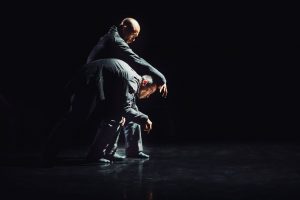
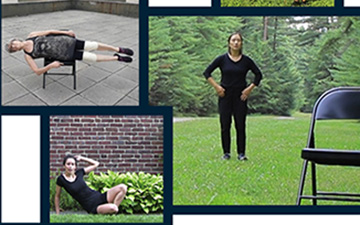

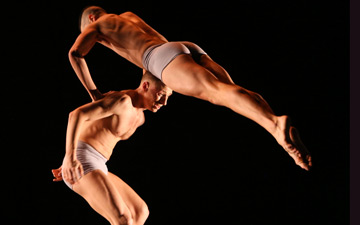
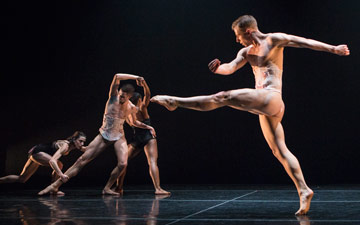
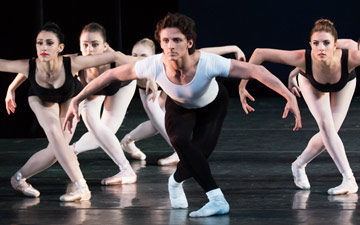


You must be logged in to post a comment.